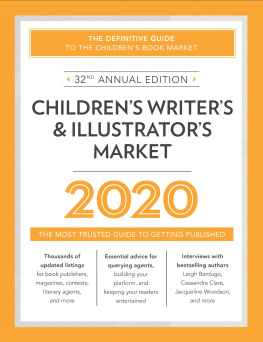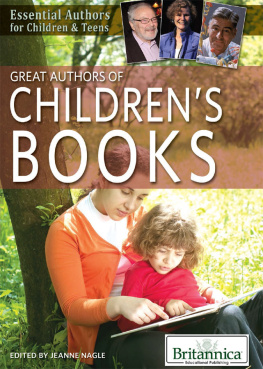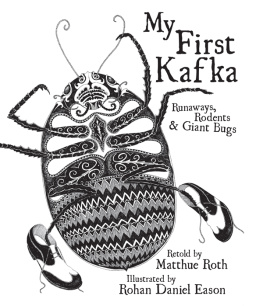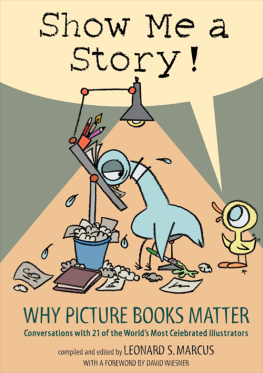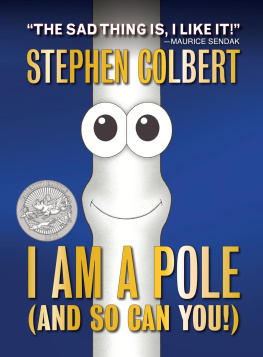Conversations with Maurice Sendak
Literary Conversations Series
Monika Gehlawat
General Editor
Conversations
with Maurice Sendak
Edited by Peter C. Kunze

www.upress.state.ms.us
The University Press of Mississippi is a member of the Association of American University Presses.
The Estate of Maurice Sendak has not approved or endorsed the publication of this anthology, Conversations with Maurice Sendak.
Copyright 2016 by University Press of Mississippi
All rights reserved
Manufactured in the United States of America
First printing 2016
Library of Congress Cataloging-in-Publication Data
Names: Sendak, Maurice, author. | Kunze, Peter C. (Peter Christopher), editor.
Title: Conversations with Maurice Sendak / edited by Peter C. Kunze.
Description: Jackson : University Press of Mississippi, 2016. | Series: Literary conversations series | Includes index.
Identifiers: LCCN 2016007781 | ISBN 9781496808707 (hardback : alk. paper)
Subjects: LCSH: Sendak, MauriceInterviews. | Authors, American20th centuryInterviews. | Childrens storiesAuthorshipJuvenile literature.
Classification: LCC PS3569.E6 Z46 2016 | DDC 813/.54dc23 LC record available at http://lccn.loc.gov/2016007781
British Library Cataloging-in-Publication Data available
Contents
Nat Hentoff / 1966
Virginia Haviland / 1970
Muriel Harris / 1970
Walter Lorraine / 1977
Jerry Griswold / 1978
Glenn Edward Sadler / 1982
Hank Nuwer / 1984
Steven Heller / 1986
Philip Nel / 2001
Roger Sutton / 2003
Patrick Rodgers / 2007
Terry Gross / 2011
Introduction
In the final year of his life, Maurice Sendak gave two prominent interviews that garnered considerable media coverage. The first was with Terry Gross, the mild-mannered host of NPRs Fresh Air, in September 2011. During this interview, many listeners heard something that must have taken them aback: a reflective and melancholy Sendak, one overwhelmed by the relatively recent deaths of friends and his partner of nearly fifty years, Eugene Glynn (in 2007), and the likely prospect that his own death was imminent. The sincerity Sendak exhibited in this interview resonated with many members of the audience, and, by Fresh Airs count, inspired more responses than any other interview that year and even a 2012 illustrated talk by Christoph Niemann for the New York Times Magazine website. The second interview, with Stephen Colbert on The Colbert Report in January 2012, offered its audience quite a different Sendak: one who was cranky, acid-tongued, and mischievous. He both humored Colberts faux conservative schtick on the one hand and eviscerated the comedians feigned stupidity on the other. These two interviews, for their respective solemnity and playfulness, reveal two sides of Sendaks personality, revealing how incredibly thoughtful, spirited, and multi-faceted he was. Conversations with Maurice Sendak hopes to recapture much of his complexity and preserve it in one volume; in doing so, readers will hopefully gain a newfound appreciation for Sendak and the range and depth of his considerable oeuvre.
When Maurice Sendak died in 2012, Margalit Fox of the New York Times contended that he had wrenched the picture book out of the safe, sanitized world of the nursery and plunged it into the dark, terrifying and hauntingly beautiful recesses of the human psyche. Similar sentiments echoed throughout the press, academia, and social media. Jules Feiffer told Publishers Weekly that Sendak gradually redefined what a childrens book should look like and what we were to think of the form from here on out. He was a game-changer (Maurice Sendak Remembered). George R. Bodmer, writing in the academic journal PMLA, started off his tribute to Sendak by noting that he was an artist who not only produced extraordinary art and Yet Sendaks contribution to childrens literature may also be his refusal to take it as anything less than a serious artistic venture. Sendak was but one member of the vanguard of writers, illustrators, and editors who understood that childrens literature was, first and foremost, literature and that children as an audience were sophisticated, intelligent, and capable readers.
Of course, to celebrate Maurice Sendak as a revolutionary artist of the twentieth century is somewhat ironic, given he was a man somewhat out of his time. Through his private studying and formidable collecting, Sendak demonstrated his serious admiration for the art of the past, especially of the nineteenth century. Sendak testifies again and again to his enduring admiration for Herman Melville and Emily Dickinson, George Cruikshank and Beatrix Potter, Wolfgang Amadeus Mozart and Gustav Mahler throughout the interviews that follow. This point should not imply Sendak was a cultural snob; he also had a great fondness for Mickey Mouse (though he preferred the Mickey of his youth to the later incarnations) and Hollywood cinema of the 1930s and 1940s. One sees these influences time and again, whether in Pierres Bartleby the Scrivenerlike indifference or the bakers who resembled Oliver Hardy in In the Night Kitchen. Sendaks work reveals a profound eclecticism that fused the popular culture of his youth with the folk culture of his Jewish ancestors as well as the mainstays of the Western canon. When one looks at the cartoons he drew for the physics textbook Atomics for the Millions in 1947, the iconic cross-hatching used for the Wild Things in 1963, and the baroque imagery of Outside Over There in 1981, one cannot help but marvel at the diversity of styles Sendak employed as his understanding and command of illustration developed. Considering both his approaches and his influences, one begins to see his body of work as both learned and nuanced, but still pleasing and accessible.
Yet to see Sendak as a childrens book author alone greatly impairs ones understanding of his art. A brief look over the bibliography included in this volume shows a sharp decline in childrens book illustration in the late 1970s, when Sendak began to work in other media and art forms, including television, theater, and opera. He wrote, with Carole King, an adaptation of The Sign on Rosies Door and The Nutshell Library for the stage and, eventually, an animated television special. He designed sets, costumes, and posters for theatrical and operatic productions around the United States and Europe. He produced cover art for literary biographies and national magazines as well as promotional illustrations for American Express and the New York Is Book Country Festival. In 2003, he even collaborated with Tony Awardwinning playwright Tony Kushner to adapt Hans Krsa and Adolf Hoffmeisters Brundibr, a Czech opera famously put on by children in the Theresienstadt concentration camp to entertain visiting Nazi officials. To identify Maurice Sendak as the author of Where the Wild Things Are alone greatly underestimates the breadth and complexity of an artist who, for over fifty years, sought new challenges and broke new ground in his effort to produce and promote art for children and adults in the United States and abroad.
This volume, in some modest way, gestures toward a richer vision of Sendak and his work. The interviews herein explore his evolving ideas about childhood, literature, and art in general, but a good deal of attention is also paid to childrens literature, which Sendak continued to theorize throughout his career. While talking with Bill Moyers on the show
Next page

